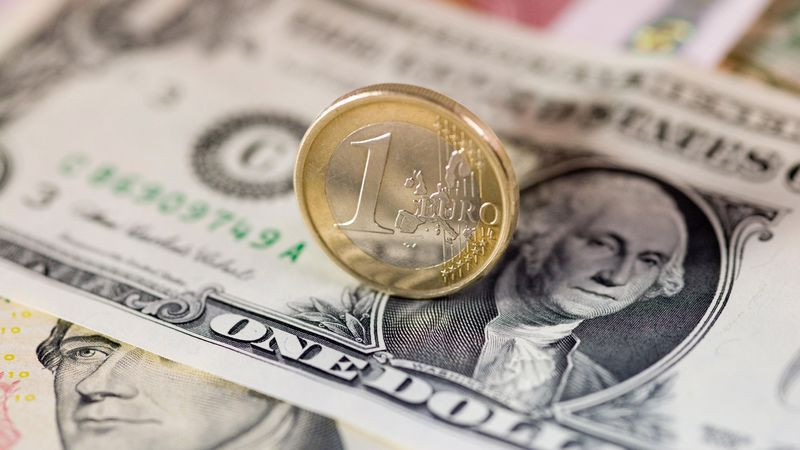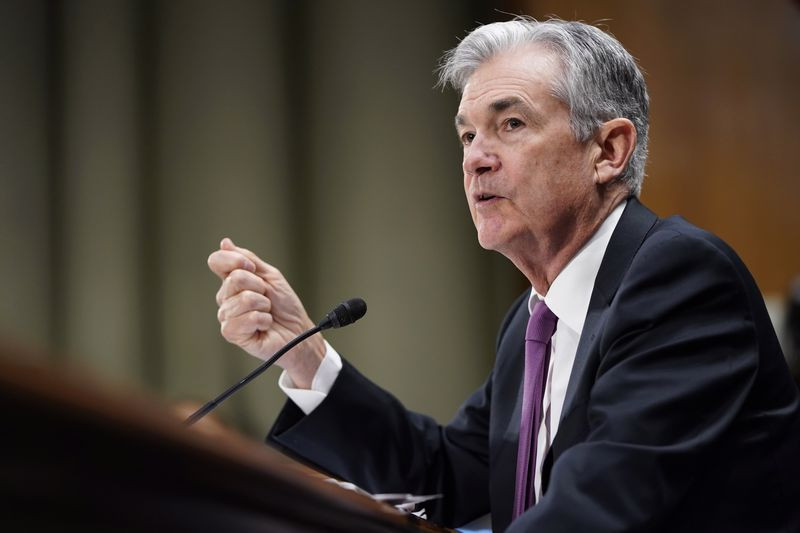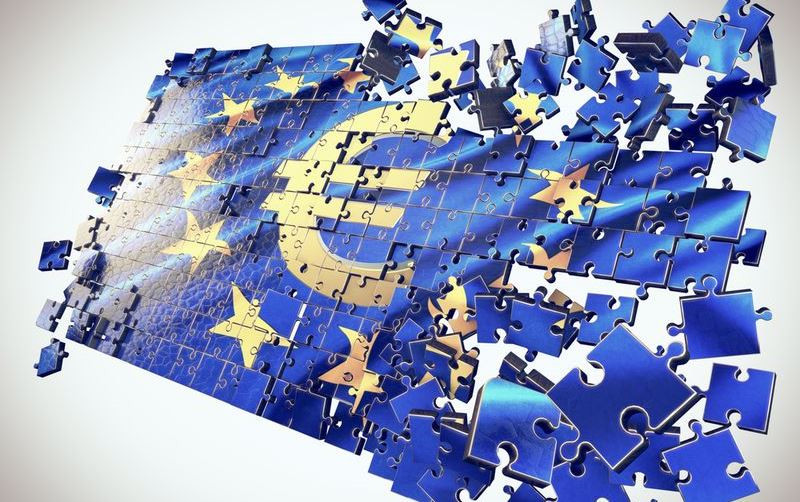
Investors are still trying to see the peak of inflation hiding behind the clouds of recession.
Against this background, the greenback has already reached levels not seen in the last 20 years, partly thanks to traders seeking refuge from sharp fluctuations in the markets.
A reflection of the degree of concern of the players is the so-called "Wall Street fear index", which is at three-month highs.
According to Scotiabank strategists, risk aversion is the main driving force for USD, along with the rapid growth of long-term profitability of treasuries and the overwhelming bearish attitude of investors regarding stocks.
On Friday, the yield on 10-year US government bonds jumped above 3.8%, reaching the highest value since 2010.
Meanwhile, key Wall Street indicators ended the last trading day of last week in the red, showing a decline for the second consecutive week. In particular, the S&P 500 plunged by 4.6%.
Since the beginning of this year, the broad market index has declined by 21% – this is the worst indicator since 2008, when the indicator fell by 38% due to the global financial crisis.
Citigroup analysts believe that the rise of the US stock market in the last days of the outgoing year, also known as the Santa Claus rally, may not happen this year. According to experts, the rally at the end of the year critically depends on how well the market behaved before.
Traders are concerned that the prospects for a "soft landing" of the US economy are weakening as the Federal Reserve continues to aggressively tighten monetary policy as part of the fight against high inflation.
"It used to be thought that the recession would be short and shallow. Now we are discarding this and thinking about the unintended consequences of a much tighter monetary policy," PineBridge Investments analysts said.
Last week, the US central bank raised its key rate by 0.75% for the third consecutive time. The central bank expects the cost of borrowing to increase to 4.4% by the end of this year and to 4.6% by the end of next year.
However, as Bloomberg reports, the figure of 4.6% is highly likely to be not the final peak of this rate hike cycle. According to the agency, historically, the Fed has almost always had to raise rates above the level of consumer inflation in order to curb it.

Last Wednesday, Fed Chairman Jerome Powell said that the central bank will continue to focus on inflation in the United States and will need to see a convincing decline in the pace of price growth in the coming months to change its forecast.
Powell also noted that a "soft landing", when the economy avoids recession as interest rates rise, will be a very difficult task, when everything depends on how quickly price pressure decreases.
However, the hawkish course may change, since further decisions on the rate, according to Powell, the central bank will take from meeting to meeting, and perhaps at some point it will be appropriate to even slow down the pace of tightening.
When this moment comes, investors will think about whether it is worth selling the American currency.
So far, the aggressive attitude of the Fed and the threat of a global recession are forcing investors to buy a protective dollar.
"Buying USD is rather a way to avoid risk. Fears of a global recession have actually intensified and expanded quite widely," Maybank strategists said.
Brown Brothers Harriman economists maintain a bullish outlook for the US currency amid the prevailing risk aversion and the hawkish FOMC decision last week.
"As global economic growth has slowed significantly, the background for risky assets remains difficult. We expect that the dollar will continue to strengthen in these conditions," they said.
Following the results of the last five days, the greenback gained more than 3% in weight and finished around 113.
At the beginning of the new week, the greenback continued to outpace its main competitors as a safer alternative. The market environment unfavorable for risk has opened up new price horizons for USD.
On Monday, the dollar broke above the 114 barrier for the first time in more than twenty years.
The nearest target of the greenback is now the round level of 115.00 before the high of May 2002 at 115.30.
Concerns about the strengthening of the global economic downturn continue to push the greenback up, while the EUR/USD pair remains bearish. Last week, it lost more than 300 points.
"The decline in EUR/USD last week was mainly due to the strengthening of the dollar after the Fed's policy update on Wednesday, which gave a strong signal that the central bank will need further major rate hikes before the end of this year," MUFG Bank analysts noted.

During the Asian session on Monday, the main currency pair fell to the lowest level since June 2002 in the area of 0.9550. Then it bounced back to 0.9700, but the recovery from multi-year lows faded quite quickly. And the pair went down again in the direction of 0.9600.
Inflation is spreading more and more across the eurozone, while economic growth is slowing down as the currency bloc is experiencing difficulties due to the conflict in Ukraine, European Central Bank Vice President Luis de Guindos said on Monday.
"We expect that economic growth will slow down significantly in the third and fourth quarters, and we may witness that its pace will approach zero," he said.
According to forecasts, inflation will accelerate to 9.6% this month, which will be a record high for the eurozone.
Inflation data for September will be released by Eurostat on Friday.
"The risk is associated with another strong consumer price index, which should contribute to a significant increase in interest rates by the ECB," analysts at Commonwealth Bank of Australia said.
"But we believe that the single currency will receive little support from expectations of higher interest rates, given the reduction in the current account of the eurozone," they added.
Nordea Bank believes that a break below the 0.9500 mark will open the door for a EUR/USD drawdown up to the 0.9000 level.
"Recently, Europe has found itself in the epicenter of a perfect storm in the energy markets. The shock in energy prices has affected and is likely to have an impact on the industrial sector of the region, which will lead to a negative shock in the terms of trade for the eurozone. Goods that were previously produced in Europe will now have to be imported from other countries where energy prices have not risen as much as in the eurozone. The deterioration in the terms of trade suggests that the euro will be weaker. In addition, the winter heating season has almost arrived, and the risks of energy rationing are looming over Europe," the bank's specialists noted.
In their opinion, another negative point for the single currency is the strengthening of political fragmentation in Europe.

"Political parties that are far from the center win elections – look at Italy and Sweden. The euro is a political project, and if EU politicians suddenly stop getting along with each other, then the existence of a single currency may be in question – as it was during the euro crisis in 2010," Nordea Bank strategists said.
At the same time, the bank believes that the influence of the factors underlying the European energy crisis should weaken in the foreseeable future.
"It is extremely difficult for the EU and, in particular, Germany to diversify gas supplies quickly in the short term. LNG will come in more, but it will be more expensive than Russian gas, which Germany is used to, and it will take time before the infrastructure for significant volumes is created. More precipitation will help European hydropower production. In addition, France needs to restore the operation of its nuclear reactors, which will also take time, but should be resolved within the next year," Nordea Bank said.
The dollar will continue to grow against the euro over the next months, Danske Bank predicts.
"The strong negative shock for the eurozone compared to America, the further cyclical weakening of the eurozone's trading partners, the coordinated tightening of global financial conditions, the strengthening of the dollar and the risk of a downturn in the currency bloc's economy allow us to assume that the EUR/USD pair will move further down with a target of 0.9500," the bank's analysts said.
"The main risk for the EUR/USD shift towards 1.1500 is the weakening of global inflationary pressure and the rise of industrial production. Upside risks also include renewed focus on China's credit easing and global capital investment growth," they added.
So far, the main currency pair is approaching the 0.9600 mark. The loss of support near the recent low of 0.9550 is fraught with testing the round level of 0.9500.
On the other hand, a dip above the 0.9700 mark will allow the pair to aim for the 0.9750 and 0.9800 levels.
 English
English 
 Русский
Русский Bahasa Indonesia
Bahasa Indonesia Bahasa Malay
Bahasa Malay ไทย
ไทย Español
Español Deutsch
Deutsch Български
Български Français
Français Tiếng Việt
Tiếng Việt 中文
中文 বাংলা
বাংলা हिन्दी
हिन्दी Čeština
Čeština Українська
Українська Română
Română

